#Remote Data Acquisition
Explore tagged Tumblr posts
Text
it weekend now so i cant continue fiddling around with it (and most likely i wont have much time for fancy projects next week) but i was so excited to install a usb sniffer on the windows computer and see what the traffic to the spectrometer looks like. and then the stupid driver issue happened!!
#tütensuppe#also slightly worrying that the singular person ive talked to about this project#(one of the spectrometer users. not fluent in control system or the more techy stuff)#seems very convinced that this is going to work. which i am very much not im just playing around at this point#i can retrieve usb identification info (like serial number connection speed device model etc)#but the attempts at functional communication a) returned numbers i cant parse b) im not even sure what i DID there#i replugged it this morning but ran what i thought was an initializing command before#and it started audibly moving something inside so i think i was accessing the slits/shutter instead#in the long run it WOULD be preferable to integrate it into the control system but my skills are questionable...#aside from the driver issue it would also help w the work bc you can make properties record the history#rn apparently they have to manually record what settings they use when and if someone forgets you can throw out the data.#plus: less clunky remote control and easy integration into their data acquisition tool#it would be SO COOL but its harder than expected weh weh
0 notes
Text
How Technology is Changing CEO Staffing

Technology and CEO Staffing: The Changing Teams of Technology Today
Corporate life has transformed the entire process of CEO staffing. Not that long ago, it was just an act in which one connected to the other or showed up. That is why you do not even require a piece of paper to hold a resume. High-end technology now dominates modern recruitment engines for the recruitment of a CEO. They apply technological means to the shortening of the process, improve evaluations, and an ideal match for the client. This article examines the face of executive recruitment in terms of its transformation by technology on the way it is placed today and into the future.
AI and Data Analysis have their hands in shaping the present technology:
Artificial Intelligence (AI) and data analytics are at the forefront of a technological revolution. An AI-enabled platform can develop a detailed profile of a candidate by going through millions of searches, narrowing down with skills and experiences typical to that of a CEO. It has algorithms to analyze his resume, social networking sites, and professional network. Furthermore, data analytics allow a staffing agency to measure whether a candidate is indeed a good fit for the position based on objective metrics, reducing bias, and rendering the match closer to perfect. All these make you fast and accurate in the CEO selection process and give the very best output to your clients.
Virtual Assessment and Remote Interview:
The ability to interact virtually with applicants for the position of CEO has completely transformed these once-in-person assessments. They allow deep, even in many cases, online sessions to test various aspects of a candidate's proficiency, including leadership style, cultural fit, and even some parameters that could be difficult to gauge in in-person meetings. Remote interviews seem the most beneficial, as they widen the prospective candidate pool beyond geography. It saves time and resources for both clients and candidates. Of course, there are challenges like ensuring the internet is stable and the ongoing interest in virtual engagement, but most experienced placement agencies have created ways to cover these necessary areas and give an uninterrupted virtual experience to all.
Higher Collaboration and Communication:
Moreover, technology has improved communication and collaboration between staffing agencies, clients, and candidates. The whole system now benefits from real-time updates about shared information through the use of project management tools, collaborative platforms, and secure communication channels. In such a setting, planning and ease of access all lead to placement happening freely and fast, making it easy for everyone at every level to get alerts, notifications, and involvement as the recruitment process unfolds. The speed of placement thus increases because communication flows much easier between all parties.
Cyber Security and Confidentiality:
This implies that in one corner of the universe, where confidentiality matters, they need one reserve for this C.E.O., and the next display of human resources will be from the best agencies. The agencies do understand the requirement for highly advanced cybersecurity features. They accommodate applications such as encryptions, safe data storage modes, and safe access to data. Thus, they keep updating the most recent protocols and best practices to ensure the professionalization of the way every data handling is done. This professionalism also develops the trust of the clients and candidates.
Future of CEO Staffing:
Today, with the efficacious technology improving continuously and the obvious enhancement creeping within recruitment, it holds a much brighter future before CEO placement in the days to come. Prediction analytics with virtual reality assessment become completely revolutionized and many more are offered under blockchain technology in the long run. Statistically, while improving technology, it needs to keep pace as an adaptable and innovative person to continuously better serve clients of the leading staffing agencies. The pioneering agencies to adopt innovative technologies would probably have the best room for coping well with the future demands in the future-from clients and employees they would be able to entice.
Conclusion
The age of information will not just transform CEO staffing; it is bound to do so revolutionarily. From AI-sourcing candidates to secure virtual assessments, these innovations will make processes increasingly efficient, accurate, and transparent. Thus, the use of such technology by most CEO staffing firms like the Alliance Recruitment Agency would enable them to be able to offer unparalleled services that help businesses discover ideal leaders for their success. Feel free to contact us today and get into the new age of technology applied to provide the perfect leader for your organization.
FAQs:
1. Q: Can AI determine the best CEO candidate, or does it lack that "human touch"?
A: AI and data analytics provide powerful means for determining if candidates possess the requisite skills and experience, but they are applied to assist human judgment rather than replace it. The well-regarded CEO staffing firms have now started using AI for the initial screening of candidates, thereby allowing their trained consultants to focus on exhaustive interviews and evaluations. This assurance, in turn, keeps the human angle—assessments of cultural fit, leadership style, and other intangibles—at the center of the selection process. AI provides the best technical base, while the final decision rests with seasoned professionals.
2. Q: In what ways does virtual interviewing impact assessing candidates for the CEOs' leadership presence?
A: If done right, virtual interviews are a very effective way to assess leadership presence. Professional staffing firms are using high-end video conferencing tools with adequate light and sound for conducting structured interviews that assess both the candidate's communication style and strategic thinking and emotional intelligence. They also make use of other virtual assessment tools to assess leadership skills in this setting. Although there are benefits to the personal interactions of in-person programs, technological platforms allow us to offer a more efficient solution; consultants trained in assessing presence can do so quite accurately in a virtual environment.
3. Q: What advantages accrue to a technology-driven CEO staffing agency that would not apply to one using conventional methods?
A: Technology-driven CEO staffing agencies confer several paramount benefits. They have access to a wider pool of qualified candidates, iced down screening processes, lessened bias through data-led assessments, and improved communication and collaboration. All these translate into shorter placements, more accurate matches, and more efficient recruitment overall. Technology allows for a higher level of confidentiality and security, both of which are vital in any high-level executive searches. This enables the agencies to get on with a much more complete set of services, thereby achieving even better results for the clients.
4. Q: How is executive staffing encroaching on the cybersecurity aspect in the handling of sensitive candidate information?
A: For professional CEO staffing agencies, cybersecurity is non-negotiable. Their safety measures must include encryption, secure storage of data, and controlled access. They uphold good practices in the field and keep ahead of ever-evolving cybersecurity protocols. Many of them use an applicant tracking system that encompasses enterprise-grade security. In training their staff about data protection and confidentiality, they also regularly audit security and ensure protection against any breach. Such a commitment to cybersecurity sustains the integrity of both the clients and the candidates.
5. Q: If so much technology is used, does that make CEO staffing agencies a thing of the past?
A: Not in the least. Technology provides a timely advantage, yet the human side of CEO staffing remains truly irreplaceable. While technology may help facilitate the staffing procedure, the experience, judgment, and relationship-building quality of an experienced consultant cannot be replaced. The CEO staffing industries are going to continue evolving in their own right by taking on board technologies to improve their offerings. Their role will evolve to become much more strategic, with a focus on truly coaching opinions, deciphering complex business needs, and a perfect cultural fit. The future of CEO staffing would epitomize the synthesis of technology and human knowledge.
View Source: https://kelvinmadris.wixsite.com/alliance-recruitment/post/how-technology-is-changing-ceo-staffing
#CEO staffing#executive recruitment#AI recruitment#virtual hiring#data analytics hiring#leadership recruitment#technology in recruiting#Executive search#talent acquisition#remote interviewing#cybersecurity staffing#future of hiring
0 notes
Text
Revolutionizing Industries with Real-Time Remote Monitoring and Data Acquisition Systems: CMSGP's Advanced Solutions
In today’s fast-paced industrial landscape, the need for real-time data and remote monitoring has never been more critical. As businesses strive for efficiency, safety, and competitiveness, CMSGP leads the way by offering cutting-edge Real-Time Remote Monitoring with Data Acquisition Systems (DAS). These advanced solutions are transforming industries by providing unparalleled insights and control, enabling businesses to make informed decisions, optimize operations, and ensure seamless performance.

The Power of Real-Time Remote Monitoring and Data Acquisition
CMSGP's Real-Time Remote Monitoring and Data Acquisition Systems combine state-of-the-art technology with robust design to deliver precise, reliable, and actionable data from various industrial processes. Whether in manufacturing, energy management, or environmental monitoring, these systems empower businesses to monitor operations remotely, collect critical data, and respond swiftly to any anomalies or changes.
Key Features of CMSGP's Data Acquisition Systems
1. Real-Time Data Collection and Analysis:
CMSGP’s Data Acquisition Systems are engineered to capture and analyze data in real-time, providing instant visibility into operational performance. This capability allows businesses to monitor key parameters, detect issues as they arise, and implement corrective actions immediately, minimizing downtime and enhancing productivity.
2. Remote Accessibility:
One of the standout features of CMSGP’s solutions is the ability to access and control the system remotely. From any location, operators and engineers can monitor processes, retrieve data, and make adjustments using secure web-based interfaces. This remote accessibility is particularly valuable for operations spread across multiple sites or in challenging environments.
3. Scalability and Flexibility:
CMSGP’s Data Acquisition Systems are designed to be scalable, catering to both small-scale applications and large industrial deployments. The systems are highly flexible, supporting a wide range of sensors, data inputs, and communication protocols, which allows for easy integration with existing infrastructures and future expansions.
4. Enhanced Data Security:
Data security is a top priority in CMSGP’s solutions. The Real-Time Remote Monitoring and Data Acquisition Systems incorporate advanced encryption and authentication measures to protect data integrity and confidentiality. This ensures that critical information is safeguarded against unauthorized access and cyber threats, giving businesses peace of mind.
5. Customizable Dashboards and Reporting:
CMSGP offers customizable dashboards that provide a clear and concise view of key performance indicators. Users can tailor the interface to display the most relevant data, enabling quick analysis and informed decision-making. Additionally, the system’s reporting tools allow for automatic generation of reports, facilitating regular performance reviews and compliance documentation.
Applications Across Industries
CMSGP’s Real-Time Remote Monitoring with Data Acquisition Systems is revolutionizing operations across various industries:
Manufacturing: In manufacturing, these systems monitor machinery, production lines, and environmental conditions, helping to prevent equipment failure and optimize production processes.
Energy and Utilities: For the energy sector, CMSGP’s systems enable the monitoring of power generation, distribution networks, and energy consumption, ensuring efficient operation and reducing energy waste.
Environmental Monitoring: In environmental management, these systems track parameters such as air and water quality, helping organizations comply with regulations and protect natural resources.
Infrastructure and Smart Cities: CMSGP’s solutions also play a key role in infrastructure management, including smart cities, where they monitor and manage resources like water, electricity, and transportation systems.
CMSGP’s Commitment to Innovation and Excellence
At CMSGP, innovation and excellence are at the heart of every solution. The company is committed to advancing technology and delivering solutions that meet the evolving needs of its clients. CMSGP’s Real-Time Remote Monitoring and Data Acquisition Systems are a testament to this commitment, offering unparalleled performance, reliability, and value.
Conclusion: Unlocking the Future with CMSGP
Real-time remote monitoring and data acquisition are essential for businesses that aim to stay ahead in today’s competitive landscape. CMSGP’s advanced systems provide the tools needed to achieve this, offering real-time insights, remote accessibility, and robust data management. By partnering with CMSGP, businesses can enhance their operational efficiency, ensure safety, and drive sustainable growth.
Discover how CMSGP’s Real-Time Remote Monitoring with Data Acquisition Systems can transform your operations and position your business for success in the digital age. Reach out to CMSGP today and take the first step towards a smarter, more connected future.
0 notes
Text
Intelligent Brain of Energy Management System: Gateway Helps Achieve Efficient and Safe Energy Management
With the rapid development of society, energy consumption management has gradually become an indispensable part of our lives. In the energy consumption system, the gateway, as an intelligent brain, plays an important role. In this paper, we will discuss in depth how gateways can help energy consumption systems realize efficient and safe energy management in conjunction with the Forlinx Embedded FCU2601 gateway.
01 The Challenge of Energy Consumption Management and the Importance of Energy Consumption System in the New Era
Energy consumption management in the new era is facing challenges such as diversified energy structure, informatization and intellectualization, environmental protection and sustainability, but it also brings important opportunities for energy consumption systems to improve energy efficiency, reduce costs and promote sustainable development. We should fully recognize and actively respond to these challenges, use advanced energy management systems, and contribute to the realization of a green, low-carbon and sustainable energy future.
02 Intelligent brain in energy consumption system: role and advantages of gateway
1. Data acquisition and real-time monitoring
In today's highly modern and intelligent energy consumption system, the importance of the gateway can not be ignored. It is regarded as the "intelligent brain" of the whole system and undertakes the key tasks of data acquisition and real-time monitoring.
As a core component, the gateway plays a vital role. Its powerful data acquisition capability enables it to connect with many devices and sensors in the system, and then obtain important data such as the operation status of the equipment and the flow of energy in real time. This comprehensive data acquisition function makes the gateway a data intersection point in the energy consumption system, providing an accurate and complete data source for subsequent data analysis and decision-making.
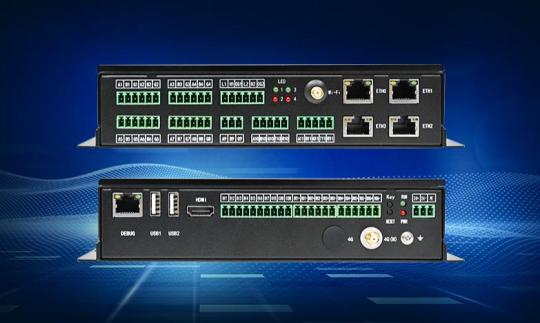
The real-time monitoring function of the gateway adds a pair of "wisdom eyes" to the whole system. It can analyze the collected data in real time and quickly identify potential risks such as equipment failure and energy leakage. This real-time alarm mechanism undoubtedly enhances the early warning ability of the system, enabling relevant personnel to take coping strategies at the first time, deal with problems quickly, and ensure the stable and safe operation of the entire energy consumption system.
2. Intelligent analysis and optimization strategies
The role of gateways in energy consumption systems is not limited to data collectors. In fact, it is an intelligent analysis center with powerful data processing and analysis capabilities. With the help of advanced data analysis technology and machine learning algorithms, the gateway can deeply mine, analyze and learn the large amount of data collected.
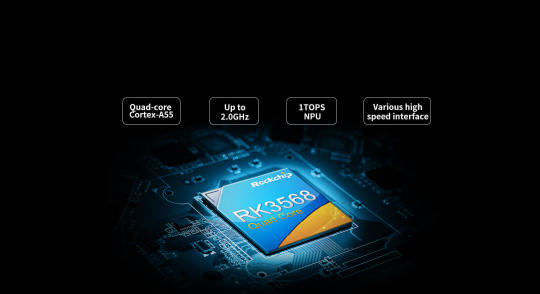
This kind of intelligent analysis can help enterprises and managers identify potential problems and shortcomings in energy consumption management, and provide optimization suggestions for them.
For example, using multivariate information such as historical data and weather forecasts, gateways can build predictive models to predict energy demand over time. Based on these predictions, the gateway can intelligently adjust energy supply and consumption strategies to ensure efficient use of energy while meeting demand.
3. Remote control and safety protection
In the energy consumption management system, the high-quality gateway not only has powerful data acquisition and analysis capabilities, but also has remote control and security protection functions, which provide double protection for enterprises and users.
The gateway realizes the function of remote control through the connection with the user equipment. This means that users can control and schedule energy consumption anytime and anywhere according to actual needs. Whether it is the adjustment of energy supply or the monitoring of equipment operation, users can achieve it through remote control. This control mode greatly improves the flexibility and efficiency of energy utilization, and also brings users a more convenient use experience.
In the era of digitalization and intellectualization, data security is particularly important. High-quality gateways take full account of this, so they have powerful security protection functions. These functions can not only ensure the safe transmission of system data and prevent data from being intercepted or tampered during transmission, but also effectively prevent hacker attacks and data leakage. This provides a solid security barrier for the energy management system and ensures the security and stability of the system and data.
03 Choosing high-quality gateways to inject wisdom into energy consumption systems
In the construction of energy consumption system, it is very important to choose a high-quality gateway. A high-quality gateway should not only have powerful functions, but also have a high degree of security, reliability and stability. Only in this way we can ensure the successful operation of the energy consumption system and bring high-quality energy consumption services to users.
Forlinx Embedded a company focusing on embedded technology, who provides a number of high-quality gateway products. FCU2601 is designed with high performance, multi-interface and low power consumption, which can widely meet the local energy management application needs of various energy storage systems.
The FCU2601 embedded control unit takes into account the differentiated needs of different scenarios in the energy consumption industry, and makes full preparations in hardware, protection, certification, software and other aspects to ensure the applicability, stability and reliability of the product.
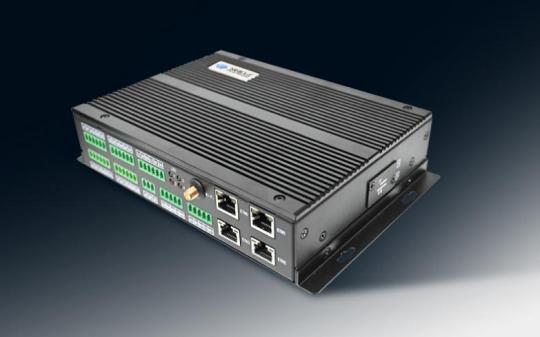
Forlinx Embedded FCU2601 Embedded Control Unit has been certified by FCC, CE, RoHS, and has been tested for environment, safety, and EMC according to telematics standards to ensure the safety and reliability of the product and to enhance the convenience of system integration.
04 Summary and Prospect
With the progress of society and the development of science and technology, energy consumption system has gradually become a key link in the field of energy. For enterprises and households, how to effectively manage energy consumption and improve energy efficiency is not only related to economic benefits, but also to environmental protection and sustainable development.
In this context, high-quality gateway, as the core component of energy management, plays an important role. They can not only collect and monitor energy consumption data in real time, but also provide strong support for energy management through intelligent analysis, help enterprises and households find potential energy waste problems, put forward optimization suggestions, and achieve efficient energy use.
In the future, the prospect of energy consumption system will be broader. With the large-scale application of renewable energy and electricity the rapid development of electronic technology, energy consumption system will pay more attention to the intelligent scheduling and balancing of energy. High-quality gateways will continue to play a key role in ensuring the stable and safe operation of energy consumption systems through remote control and security protection functions. At the same time, they will connect with more intelligent devices and sensors to build a more intelligent and automated energy management system.
Let us join hands to go to the future of green wisdom, choose high-quality gateways, and help energy management innovation and development. Through joint efforts, we believe that we can achieve efficient use of energy, continuous improvement of the environment, and contribute to sustainable development.
Originally published at www.forlinx.net.
#FCU2601 Gateway#Energy Consumption Management#Data Acquisition and Real#time Monitoring#Remote Control
0 notes
Text
Battery-operated Remote Terminal Units Market Research, Size, Share, Analysis, Overview and Regional Outlook Study 2017 – 2032
The market for Remote Terminal Units (RTUs) that are battery-operated allows them to function in isolated or off-grid regions where access to a reliable power supply is restricted. RTUs are electronic devices used to monitor and manage remote equipment and processes in many different industries, such as oil and gas, water and wastewater management, power distribution, and telecommunications. Here is a summary of the market for battery-operated RTUs, including information on demand:
Market Overview: Due to a number of circumstances, the market for battery-operated RTUs has been expanding. The need for battery-operated RTUs has been fueled by the necessity for remote monitoring and control capabilities in various industries, particularly in places with weak power infrastructure. These devices enable efficient monitoring and control of remote assets without the requirement for a continual external power source thanks to their dependable and autonomous operation.
Demand Drivers:
1. Real-time monitoring and control of assets: situated in remote or isolating locations are necessary in many businesses. Without the requirement for a sizable power infrastructure or reliance on cable connections, battery-operated RTUs allow for effective data gathering, monitoring, and control of these assets.
2. Applications Off-Grid: In off-grid applications where access to a dependable power supply is restricted or nonexistent, battery-operated RTUs are widely used. Examples include remote water pumping stations in rural areas, environmental monitoring stations, remote weather monitoring stations, and remote oil and gas wellheads.
3. Emergency and Temporary Installations: Whereas immediate deployment is necessary, battery-powered RTUs are also used in emergency and temporary installations. When catastrophe recovery, building projects, or temporary infrastructure installations are taking place, these machines can instantly provide remote monitoring and control capabilities.
4. Environmental Monitoring: Data collection from remote weather stations, air quality sensors, and water quality sensors are all important aspects of environmental monitoring that battery-operated RTUs play a key role in. Continuous monitoring is made possible in remote or environmentally delicate locations by these equipment.
5. IoT Connectivity: The need for battery-operated RTUs has increased as the Internet of Things (IoT) is becoming more widely used in a variety of businesses. These devices are essential parts of IoT networks because they provide seamless data transmission, communication, and control between remote assets and central management systems.
Here are some of the key benefits for Stakeholders:
Remote Monitoring and Control
Flexibility and Mobility
Cost-Effective Deployment
Resilience to Power Outages
Integration with IoT and Smart Grids
Increased Data Accessibility
Environmental Monitoring and Compliance
Rapid Deployment for Emergency Response
Redundancy and Reliability
Scalability and Future-Proofing
We recommend referring our Stringent datalytics firm, industry publications, and websites that specialize in providing market reports. These sources often offer comprehensive analysis, market trends, growth forecasts, competitive landscape, and other valuable insights into this market.
By visiting our website or contacting us directly, you can explore the availability of specific reports related to this market. These reports often require a purchase or subscription, but we provide comprehensive and in-depth information that can be valuable for businesses, investors, and individuals interested in this market.
“Remember to look for recent reports to ensure you have the most current and relevant information.”
Click Here, To Get Free Sample Report: https://stringentdatalytics.com/sample-request/battery-operated-remote-terminal-units-market/10333/
Market Segmentations:
Global Battery-operated Remote Terminal Units Market: By Company • SIEMENS • SENECA • Omniflex • King Pigeon Communication Co.,Limited • Servelec Group • TEKBOX • Micro Sensor Co., Ltd. • Hitachi Group • Remsdaq Ltd Global Battery-operated Remote Terminal Units Market: By Type • GPRS • GSM • Modular • Others Global Battery-operated Remote Terminal Units Market: By Application • Power Industry • Government and Utilities • Industrial Global Battery-operated Remote Terminal Units Market: Regional Analysis The regional analysis of the global Battery-operated Remote Terminal Units market provides insights into the market's performance across different regions of the world. The analysis is based on recent and future trends and includes market forecast for the prediction period. The countries covered in the regional analysis of the Battery-operated Remote Terminal Units market report are as follows: North America: The North America region includes the U.S., Canada, and Mexico. The U.S. is the largest market for Battery-operated Remote Terminal Units in this region, followed by Canada and Mexico. The market growth in this region is primarily driven by the presence of key market players and the increasing demand for the product. Europe: The Europe region includes Germany, France, U.K., Russia, Italy, Spain, Turkey, Netherlands, Switzerland, Belgium, and Rest of Europe. Germany is the largest market for Battery-operated Remote Terminal Units in this region, followed by the U.K. and France. The market growth in this region is driven by the increasing demand for the product in the automotive and aerospace sectors. Asia-Pacific: TheAsia-Pacific region includes Singapore, Malaysia, Australia, Thailand, Indonesia, Philippines, China, Japan, India, South Korea, and Rest of Asia-Pacific. China is the largest market for Battery-operated Remote Terminal Units in this region, followed by Japan and India. The market growth in this region is driven by the increasing adoption of the product in various end-use industries, such as automotive, aerospace, and construction. Middle East and Africa: The Middle East and Africa region includes Saudi Arabia, U.A.E, South Africa, Egypt, Israel, and Rest of Middle East and Africa. The market growth in this region is driven by the increasing demand for the product in the aerospace and defense sectors. South America: The South America region includes Argentina, Brazil, and Rest of South America. Brazil is the largest market for Battery-operated Remote Terminal Units in this region, followed by Argentina. The market growth in this region is primarily driven by the increasing demand for the product in the automotive sector.
Visit Report Page for More Details: https://stringentdatalytics.com/reports/battery-operated-remote-terminal-units-market/10333/
Reasons to Purchase Battery-operated Remote Terminal Units Market Report:
• To obtain insights into industry trends and dynamics, including market size, growth rates, and important factors and difficulties. This study offers insightful information on these topics.
• To identify important participants and rivals: This research studies can assist companies in identifying key participants and rivals in their sector, along with their market share, business plans, and strengths and weaknesses.
• To comprehend consumer behaviour: these research studies can offer insightful information about customer behaviour, including preferences, spending patterns, and demographics.
• To assess market opportunities: These research studies can aid companies in assessing market chances, such as prospective new goods or services, fresh markets, and new trends.
In general, market research studies offer companies and organisations useful data that can aid in making decisions and maintaining competitiveness in their industry. They can offer a strong basis for decision-making, strategy formulation, and company planning.
About US:
Stringent Datalytics offers both custom and syndicated market research reports. Custom market research reports are tailored to a specific client's needs and requirements. These reports provide unique insights into a particular industry or market segment and can help businesses make informed decisions about their strategies and operations.
Syndicated market research reports, on the other hand, are pre-existing reports that are available for purchase by multiple clients. These reports are often produced on a regular basis, such as annually or quarterly, and cover a broad range of industries and market segments. Syndicated reports provide clients with insights into industry trends, market sizes, and competitive landscapes. By offering both custom and syndicated reports, Stringent Datalytics can provide clients with a range of market research solutions that can be customized to their specific needs
Contact US:
Stringent Datalytics
Contact No - +1 346 666 6655
Email Id - [email protected]
Web - https://stringentdatalytics.com/
#Battery-operated Remote Terminal Units#RTU Market#Remote Monitoring#Wireless RTU#Industrial Automation#Battery-powered RTU#IoT (Internet of Things)#Energy Efficiency#Data Collection#Telemetry#Remote Control#Battery-powered Sensors#SCADA (Supervisory Control and Data Acquisition)#Energy Management#Off-grid Applications#Renewable Energy#Battery Technology#Remote Sensing#Communication Protocols#Edge Computing#Connectivity Solutions#Remote Data Acquisition#Condition Monitoring#Asset Management.
0 notes
Text
Mariner program
The Mariner program was conducted by the American space agency NASA to explore other planets. Between 1962 and late 1973, NASA's Jet Propulsion Laboratory (JPL) designed and built 10 robotic interplanetary probes named Mariner to explore the inner Solar System - visiting the planets Venus, Mars and Mercury for the first time, and returning to Venus and Mars for additional close observations.
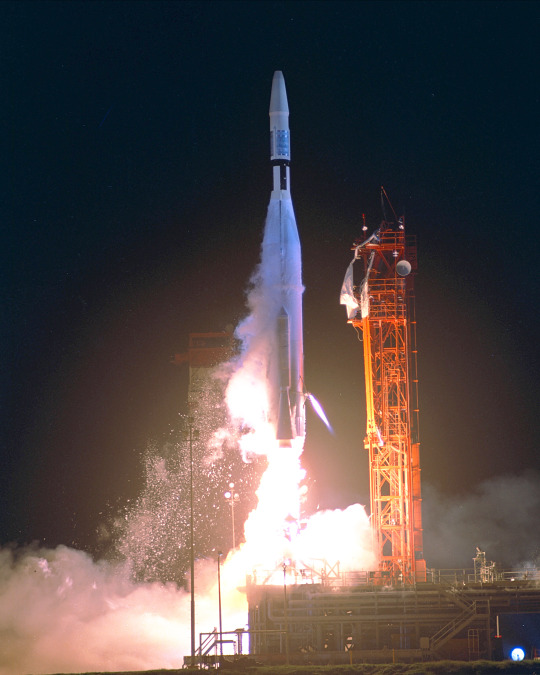
The program included a number of interplanetary firsts, including the first planetary flyby, the planetary orbiter, and the first gravity assist maneuver. Of the 10 vehicles in the Mariner series, seven were successful, forming the starting point for many subsequent NASA/JPL space probe programs.

The name of the Mariner program was decided in "May 1960-at the suggestion of Edgar M. Cortright" to have the "planetary mission probes ... patterned after nautical terms, to convey 'the impression of travel to great distances and remote lands.'" That "decision was the basis for naming Mariner, Ranger, Surveyor, and Viking probes."

Each spacecraft was to carry solar panels that would be pointed toward the Sun and a dish antenna that would be pointed at Earth. Each would also carry a host of scientific instruments. Some of the instruments, such as cameras, would need to be pointed at the target body it was studying. Other instruments were non-directional and studied phenomena such as magnetic fields and charged particles. JPL engineers proposed to make the Mariners "three-axis-stabilized," meaning that unlike other space probes they would not spin.

Mariner 1 and Mariner 2
Mariner 1 and Mariner 2 were two deep-space probes making up NASA's Mariner-R project. The primary goal of the project was to develop and launch two spacecraft sequentially to the near vicinity of Venus, receive communications from the spacecraft and to perform radiometric temperature measurements of the planet. A secondary objective was to make interplanetary magnetic field and/or particle measurements on the way to, and in the vicinity of, Venus.
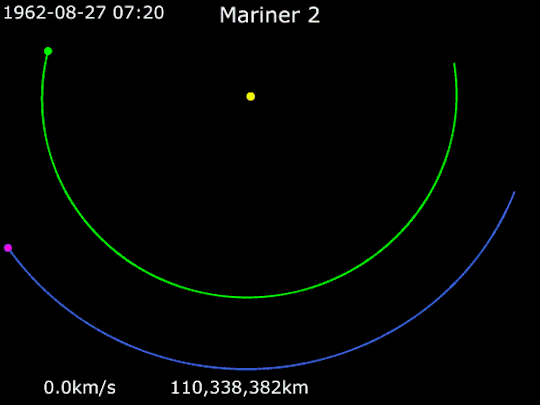
Animation of Mariner 2's trajectory from August 27, 1962, to December 31, 1962. Mariner 2 · Venus · Earth.
Mariners 3 and 4
Sisterships Mariner 3 and Mariner 4 were Mars flyby missions.
Mariner 3 was launched on November 5, 1964, but the shroud encasing the spacecraft atop its rocket failed to open properly and Mariner 3 did not get to Mars.
Mariner 4, launched on November 28, 1964, was the first successful flyby of the planet Mars and gave the first glimpse of Mars at close range
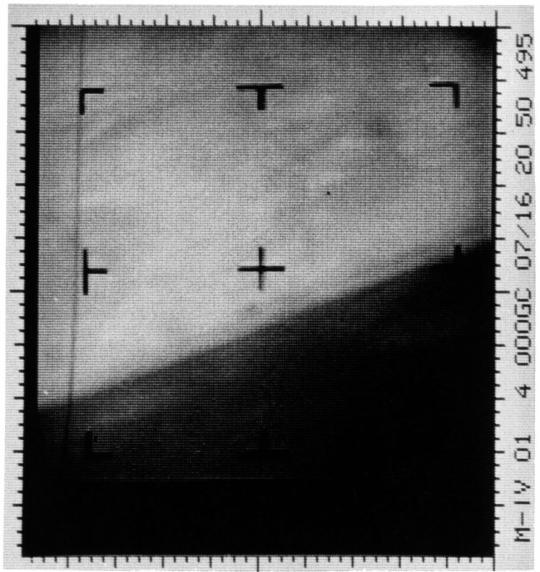
This archival image is an enhanced contrast version of the first Mars photograph released on July 15, 1965. This is man's first close-up photograph of another planet -- a photographic representation of digital data radioed from Mars by the Mariner 4 spacecraft. Data was either sent to Earth immediately for acquisition or stored on an onboard tape recorder for later transmission.
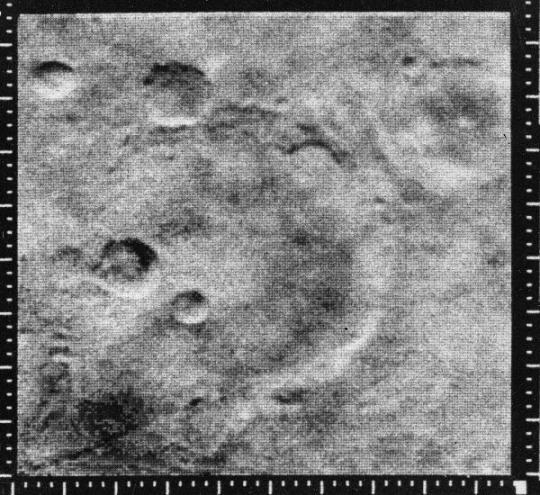
The pictures, played back from a small tape recorder over a long period, showed lunar-type impact craters (just beginning to be photographed at close range from the Moon), some of them touched with frost in the chill Martian evening.
Mariner 5

The Mariner 5 spacecraft was launched to Venus on June 14, 1967, and arrived in the vicinity of the planet in October 1967. It carried a complement of experiments to probe Venus' atmosphere with radio waves, scan its brightness in ultraviolet light, and sample the solar particles and magnetic field fluctuations above the planet.
Mariners 6 and 7

Mariners 6 and 7 were identical teammates in a two-spacecraft mission to Mars. Mariner 6 was launched on February 24, 1969, followed by Mariner 7 on March 21, 1969. They flew over the equator and southern hemisphere of the planet Mars.
Mariners 8 and 9

Mariner 8 and Mariner 9 were identical sister craft designed to map the Martian surface simultaneously, but Mariner 8 was lost in a launch vehicle failure. Mariner 9 was launched in May 1971 and became the first artificial satellite of Mars.
Mariner 10

The Mariner 10 spacecraft launched on November 3, 1973, and was the first to use a gravity assist trajectory, accelerating as it entered the gravitational influence of Venus, then being flung by the planet's gravity onto a slightly different course to reach Mercury. It was also the first spacecraft to encounter two planets at close range, and for 33 years the only spacecraft to photograph Mercury in closeup.

Venus in real colors, processed from clear and blue filtered Mariner 10 images

Mariner 10's photograph of Venus in ultraviolet light (photo color-enhanced to simulate Venus's natural color as the human eye would see it)
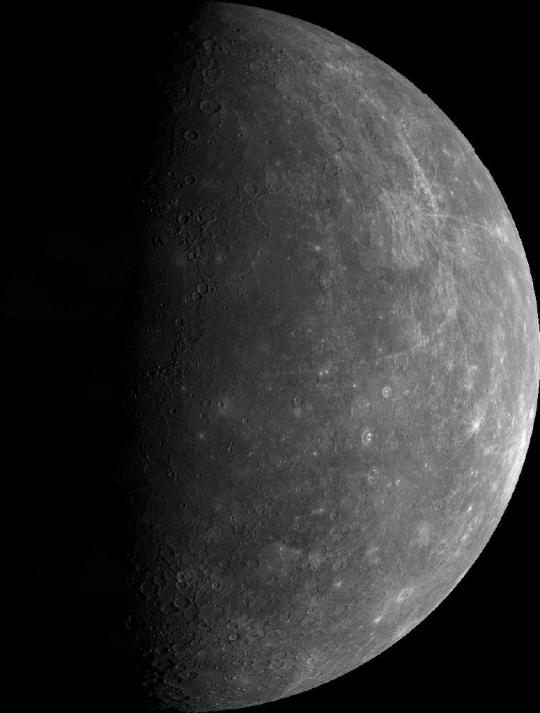
This mosaic shows the planet Mercury as seen by Mariner 10 as it sped away from the planet on March 29, 1974.
source x, x | images x
#mercurio#mercury#venus#mars#marte#astronomy#astronomia#space#solarsystem#sistemasolar#universe#universo#mariner#mission#space exploration
267 notes
·
View notes
Text
To the Cabal & Those Of Baal Worship
Do you want to know a secret?
- Remember the good ole days when someone had to be wired to gather information for a sting operation?
- Remember how someone would be searched before they entered a high security area for secret meetings you didn't want recorded on record?
- Remember when you could ensure that if someone would speak of what went on you had a way to get rid of them?
I want you to think of a hypothetical technology for second. Let's call it "Bio-Sensory Neural Interface" or "Energetic Biofield Interface" (EBI)
What can this technology achieve?
• The Bio-Sensory Neural Interface (BSNI) technology represents intelligence-gathering methodologies. It leverages the interaction between advanced computational systems and the human energetic biofield to facilitate seamless, real-time communication and data acquisition from human sensory experiences.
• Utilizes sophisticated sensors to interact with the human biofield, capturing and interpreting electromagnetic signals naturally emitted by the body.
• Enables non-invasive interfacing, ensuring the integrity and operational security of the actor.
Real-Time Sensory Data Transmission:
• Converts sensory input (visual, auditory, olfactory, and tactile) into digital data streams, allowing remote operators to experience the actor's environment firsthand.
• Acts as a live sensory transceiver, making the human body a dynamic tool for intelligence collection.
Cognitive Communication:
• Facilitates direct, silent communication between the operator and the actor through thought transmission, eliminating the need for spoken words or physical devices.
• Supports bidirectional communication, enabling strategic planning and real-time adjustments through inner dialogue.
What does this basically mean in more mundane terms?
This basically eliminates the need for physical implants or external devices, reducing the risk of detection and enhancing the safety of the operative in sensitive environments. Which means you could never detect any infiltration apparatus. You could never know who is working for the good guys.
This is one reason why your plans never pan out. This is why you can never quite nail down why something didn't go as planned. This is why you can never trace or track how certain info was shared to those who were never invited to your secret clandestine meetings.
You think because you hold them while a major celebrity is performing in town that the powerful political figures attending would fly under the radar because everyone is distracted with Taylor Swift? You are some funny guys.
BSNI technology is ideally suited for intelligence operations requiring high levels of discretion and security. Its applications extend to military intelligence, covert operations, and high-stakes negotiations where traditional intelligence methods may be impractical or too intrusive. And please avoid trying to look up this technology. This is not what it is called.
This is Mind-to-Mind technology. You all have been caught with your pants down. And now you are way too far behind to catch up to how this could have possibly been used against you. Now you are scrambling. Trying to wonder how you have had to resort to outright assassination attempts. Something that wasn't on the cards before you 1st tried years ago.
Oh' well. You lose. Off to G¡tmo you go. Pain-(☠️) is in your future.
- Julian Assange
#pay attention#educate yourselves#educate yourself#knowledge is power#reeducate yourself#reeducate yourselves#think about it#think for yourselves#think for yourself#do your homework#do your own research#do your research#do some research#ask yourself questions#question everything#julian assange#news
50 notes
·
View notes
Text
vide aurora borealis | meos amor aeternalis.
a skystar fanfic :] || chapter three of twenty !!
notes: skystar meeting for the 'first' time....soooo silly tbh starscream is such a sulky little thing. petulant princess fr. and ohhh skyfire my beloved scientist how dorky and beautiful u are...
song for this chapter: "heaven knows i'm miserable now" by the smiths. i picked it because it felt like such a funny way to describe starscream's misery.
per usual chapter is under the cut :] !!!
Archive 1920118: Starscream’s memory log. Data Source: Rodion, Cyberton. Nine million years ago.
This entire affair is, by far, the most boring thing Starscream has ever experienced, he decides about two or three breems into the first presentation of the conference.
While he was rather pleased to have been invited to the Cybertronian Ministry of Energy and Nutrition’s conference on energon production efficacy and resource acquisition, the other attendees left much to be desired. Seldom few ‘bots had anything of note to say, and those who did were so unbearably unremarkable in looks that the Vosian couldn’t be bothered to remember anything beyond their theses or preliminary findings. The thought of leaving crosses his processor several times, a tantalizing concept as some drab grounder stumbles their way through their presentation on energon synthesis. Unluckily for him, however, not only did he legitimately need to withhold his commentary, he also had to stay for the entire conference. His attendance was an immutable reflection of his influence in Vos’ political sphere and,, as such, he had to keep up appearances, lest his absence harm the city-state’s reputation––and, by extension, his own.
So Starscream stays.
That said, by the time the final speaker is slated to begin, the Seeker is fully resentful of his status and influence; what good was power if it only made one suffer, he wonders, especially if that one is himself? To be perfectly candid with himself, if he could, he would use that glory to simply leave as he so dearly desires to, but if he chooses to be flighty, then Vos will be seen as unreliable––or, worse, uninformed––and the province would be liable to outside pressure from less refined locales.
His jaded reverie is rather rudely interrupted by the sound of heavy pede-fall, and he is very obviously sullen when he directs his attention to the holodisplay. Standing alongside it is, quite legitimately, the largest Transformer Starscream has ever seen, save only for the archived images of the Thirteen. While he looks like a needlessly gentle dope, he’s still sturdily built, as far as he can tell, and he’s got confident posture, loosely speaking. Further still, his voice is even somewhat pleasing to the Seeker’s audials, what with its mixed accent and steady intonations––though naturally that voice isn’t even remotely as enjoyable as the sound of other Vosians or the sound of his own. Not wanting to waste energon on such trivial matters, Starscream doesn’t listen to the bot introduce himself, but from what he can observe, the lumbering oaf of a mech appears to know what he’s talking about, even if the subject is only vacantly entertaining. Yes, he seems put together well enough, yet there are obvious marks in the mech’s white armor, scuffs and dents and scratches all signs of damage only a long-travel mech would have, not a small-bearinged and bumbling scholar.
Interesting.
The final thing that Starscream notices, though, is the bot’s optics. Even as the lights dim to better illuminate the projection he’s pulled up, theTransformer’s optics glow enough to illuminate his face in a somewhat pleasant blue hue. Much like the jargon-dense and overly-thorough diatribe the shuttle goes on, the patience and thoughtfulness in that gaze is secondary as he studies the other aerialist; has he ever seen optics so bright? Has any other mech noticed the vibrancy and irradiance of that blue light emanating so freely, or was Starscream the first to pick up on it? The smaller flight-frame shifts forward in his seat, peering solely at the presenter and his strange optics, though after only a few astroseconds, he recoils back into his chair, because the big scrapheap is looking back at him, and that easy, once ‘dopey’ gaze is piercing as it fixes on Starscream unapologetically. The Seeker averts his own gaze almost instantly, hostile confusion and insurmountable irritation warring within his frame. The mech does not stop his insufferable staring, though, save only for a few moments during his lecture on xenobiology or whatever it is that sharp-eyed giant prattles on about.
When the time finally comes for that final presentation to come to a close, Starscream is possibly the first mech out the door, positively Pit-bent on leaving before the strange speaker approaches him. The last thing he wants is to interact with that unblinking anomaly.
Unfortunately, his briskness is rewarded poorly, considering that he collides directly with the presenter as he rounds the corner before the exit. Quick servos come to steady him, the careful touch both surprising and unwelcome. “Ah, my apologies,” the far larger mech says, pulling away as soon as the seeker is steady once more, “I did not see you; I hope you are alright." Starscream waves off both the concern and the apology, and chooses to be rather obvious about his intentions as he tries to look past the mech for an easy exit. But the narrow halls are now more congested than they were only a klik ago, and the other mech is still talking.
“I am happy for the opportunity to speak with you, though,” he says warmly, smiling down at the smaller Transformer, "I apologize for looking at you so intensely during my presentation, but I believe I recognize you from somewhere. Did you attend the Harmonex Institute of––?” Before the giant can finish speaking, Starscream exasperatedly interrupts, says tersely, “No. I don’t know any mech from Harmonex. You’re confusing me for a different ‘bot.�� The other Transformer hums thoughtfully, a contemplative look tugging that smile of his into a more neutral expression whilst he considers the idea.
The mech brightens, then, and Starscream’s systems alert him to the stress presently straining his cerebrocircuits. Great. Not only is he entertaining a conversation with a bot with a few wires loose, now he’ll have to do so with a headache.
Fantastic.
"Yes, I was mistaken; I recognize you from the Astrobiology and Deep Space Exploration program, at the Nova Cronum Research Institute,” he says, nodding to himself at the idea, “your name is Starscream, yes? I recall that you gave a presentation once on geo-biographical surveys as they pertained to a specific planet you studied, no? Though I believe you were in a different cohort than I was. I am Skyfire.” Now that gets Starscream to pause, albeit reluctantly. It had been a very long time since he had even thought about his time in Nova Cronum, and even longer since he had actually studied there. Despite skyfire being far too friendly, any ‘bot that could recall the Seeker’s research from so long ago was at least somewhat worth his time, he decides; though it irritates him to do so, he finally looks up to see the other mech, gifting him with his full attention.
The first thing he notices, upon making eye contact with the oversized scientist, is how vibrant his optics are from such close proximity.
It’s not that Starscream hasn’t seen such shades of blue before; for Primus’ sake, the color is almost impossible to avoid wherever any mech was on Cybertron, not to mention that Starscream was perpetually greeted by a backdrop of blue every time he took to the skies. In every possible sense, the color was absolutely ordinary to him. And yet…Skyfire’s optics were, unfortunately, anything but ordinary. Granted, he had noticed immediately at first look that there was something different about the luminescence of the other flier’s gaze. By the fragging Pit, that fact had been impossibleto miss, considering how the tall scientist had stared at him incessantly for the last groon and a half. But at this distance, the gleaming blues are, woefully, somewhat stunning. Not that Starscream legitimately cares: the appeal of Skyfire’s gaze was of no concern to him, and surely would, in time, fade from his consciousness. Sharply, he says, “Yes, I am that very same genius. Your memory drive’s data is regrettably accurate.”
The confirmation has Skyfire smiling, the sight of which has Starscream grimacing. “I am glad,” the white ‘bot answers, his sincerity palpable, “to see that you are doing well for yourself. it's fortuitous to see you here, Starscream. If you have the time, and if you can still recall enough of your dissertation, perhaps you could be of some assistance to me. I would be deeply grateful for your insight.” that only gets the smaller ‘bot to scoff, however, his optic ridge knitting in irritation as he sourly asks, “and to what end could I possibly help you , Skyfire of Harmonex? I’m a very busy mech. My help does not come readily, or freely.”
The answer he receives is stunning, to say the least.
“I have developed a series of research endeavors––deep space explorations to a number of planets outside of our stellar system,” Skyfire explains, gesturing thoughtfully, “and I could use insight from an expert on geological surveying and electromagnetic activity monitoring. If i am not mistaken, you do not seem to have continued your work, and while I have a list of other possible references, many of them are already off-world and will not return for some time. You are likely my only hope, Starscream.”
Primus. If Skyfire wasn’t inclined towards the sciences, he could make a fine diplomat or politician with that silver tongue of his. But, then, all of what he said had seemed genuine, a sincere display of admiration for Starscream’s intellect….
“You will have one singular groon to explain this mission of yours,” Starscream snaps, pointing a digit at the other mech, “And if i find your cause to be sufficiently…shall we say, ‘mutually beneficial,’ I will consider helping you. One groon, Skyfire. Not a single klik more.” Skyfire merely smiles at the offer, that same gentle disposition on display again, and the two depart readily and make their way to Skyfire’s aparthotel habsuite.
One groon becomes two. Then four. It’s not until a full decaphase has past that the seeker realizes how long its been, and even then, he is surprised by his own reluctance to leave Rodion––to leave Skyfire. He dismisses his reticence, waves it off as a mix of being inebriated from the engex and overly charmed by the flattery Skyfire gifted him freely. Or, well, he thinks its flattery; the praises seem to be authentic, though Starscream’s internals are a little too preoccupied with the influx of energon for him to care enough about such discernments. They talk seemingly endlessly––or, rather, Starscream talks, mostly, and Skyfire is evidently content with listening––about quite possibly everything, and Starscream finds himself enjoying the researcher’s company more than he’d expected to.
It is not until late in the solar cycle that they part, Starscream making for his own temporary lodging for the night. Skyfire’s proposal would require more contemplation come morning, but the smaller mech was well aware of his own inclinations to accept. Charity work had never been particularly high on his own list of lifetime achievements, but perhaps starting with the larger mech’s case wouldn’t be so bad.
Perhaps.
For several arcs after they split ways, Skyfire does not leave Starscream’s processor. It infuriates him to no end, at first, how the shuttle persists in his circuitry, worms into his mind like a scraplet infestation.
Worst of all, the blue of Skyfire’s optics linger in the Seeker’s thoughts, even when he drifts into recharge.
7 notes
·
View notes
Text
Hire Dedicated Developers in India Smarter with AI
Hire dedicated developers in India smarter and faster with AI-powered solutions. As businesses worldwide turn to software development outsourcing, India remains a top destination for IT talent acquisition. However, finding the right developers can be challenging due to skill evaluation, remote team management, and hiring efficiency concerns. Fortunately, AI recruitment tools are revolutionizing the hiring process, making it seamless and effective.
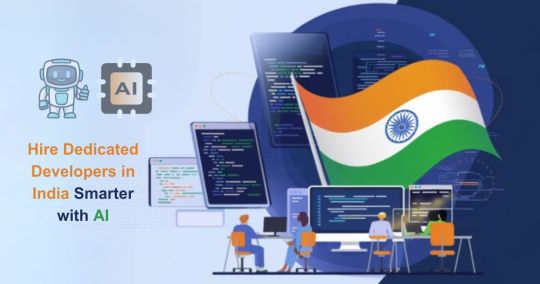
In this blog, I will explore how AI-powered developer hiring is transforming the recruitment landscape and how businesses can leverage these tools to build top-notch offshore development teams.
Why Hire Dedicated Developers in India?
1) Cost-Effective Without Compromising Quality:
Hiring dedicated developers in India can reduce costs by up to 60% compared to hiring in the U.S., Europe, or Australia. This makes it a cost-effective solution for businesses seeking high-quality IT staffing solutions in India.
2) Access to a Vast Talent Pool:
India has a massive talent pool with millions of software engineers proficient in AI, blockchain, cloud computing, and other emerging technologies. This ensures companies can find dedicated software developers in India for any project requirement.
3) Time-Zone Advantage for 24/7 Productivity:
Indian developers work across different time zones, allowing continuous development cycles. This enhances productivity and ensures faster project completion.
4) Expertise in Emerging Technologies:
Indian developers are highly skilled in cutting-edge fields like AI, IoT, and cloud computing, making them invaluable for innovative projects.
Challenges in Hiring Dedicated Developers in India
1) Finding the Right Talent Efficiently:
Sorting through thousands of applications manually is time-consuming. AI-powered recruitment tools streamline the process by filtering candidates based on skill match and experience.
2) Evaluating Technical and Soft Skills:
Traditional hiring struggles to assess real-world coding abilities and soft skills like teamwork and communication. AI-driven hiring processes include coding assessments and behavioral analysis for better decision-making.
3) Overcoming Language and Cultural Barriers:
AI in HR and recruitment helps evaluate language proficiency and cultural adaptability, ensuring smooth collaboration within offshore development teams.
4) Managing Remote Teams Effectively:
AI-driven remote work management tools help businesses track performance, manage tasks, and ensure accountability.
How AI is Transforming Developer Hiring
1. AI-Powered Candidate Screening:
AI recruitment tools use resume parsing, skill-matching algorithms, and machine learning to shortlist the best candidates quickly.
2. AI-Driven Coding Assessments:
Developer assessment tools conduct real-time coding challenges to evaluate technical expertise, code efficiency, and problem-solving skills.
3. AI Chatbots for Initial Interviews:
AI chatbots handle initial screenings, assessing technical knowledge, communication skills, and cultural fit before human intervention.
4. Predictive Analytics for Hiring Success:
AI analyzes past hiring data and candidate work history to predict long-term success, improving recruitment accuracy.
5. AI in Background Verification:
AI-powered background checks ensure candidate authenticity, education verification, and fraud detection, reducing hiring risks.
Steps to Hire Dedicated Developers in India Smarter with AI
1. Define Job Roles and Key Skill Requirements:
Outline essential technical skills, experience levels, and project expectations to streamline recruitment.
2. Use AI-Based Hiring Platforms:
Leverage best AI hiring platforms like LinkedIn Talent Insightsand HireVue to source top developers.
3. Implement AI-Driven Skill Assessments:
AI-powered recruitment processes use coding tests and behavioral evaluations to assess real-world problem-solving abilities.
4. Conduct AI-Powered Video Interviews:
AI-driven interview tools analyze body language, sentiment, and communication skills for improved hiring accuracy.
5. Optimize Team Collaboration with AI Tools:
Remote work management tools like Trello, Asana, and Jira enhance productivity and ensure smooth collaboration.
Top AI-Powered Hiring Tools for Businesses
LinkedIn Talent Insights — AI-driven talent analytics
HackerRank — AI-powered coding assessments
HireVue — AI-driven video interview analysis
Pymetrics — AI-based behavioral and cognitive assessments
X0PA AI — AI-driven talent acquisition platform
Best Practices for Managing AI-Hired Developers in India
1. Establish Clear Communication Channels:
Use collaboration tools like Slack, Microsoft Teams, and Zoom for seamless communication.
2. Leverage AI-Driven Productivity Tracking:
Monitor performance using AI-powered tracking tools like Time Doctor and Hubstaff to optimize workflows.
3. Encourage Continuous Learning and Upskilling:
Provide access to AI-driven learning platforms like Coursera and Udemy to keep developers updated on industry trends.
4. Foster Cultural Alignment and Team Bonding:
Organize virtual team-building activities to enhance collaboration and engagement.
Future of AI in Developer Hiring
1) AI-Driven Automation for Faster Hiring:
AI will continue automating tedious recruitment tasks, improving efficiency and candidate experience.
2) AI and Blockchain for Transparent Recruitment:
Integrating AI with blockchain will enhance candidate verification and data security for trustworthy hiring processes.
3) AI’s Role in Enhancing Remote Work Efficiency:
AI-powered analytics and automation will further improve productivity within offshore development teams.
Conclusion:
AI revolutionizes the hiring of dedicated developers in India by automating candidate screening, coding assessments, and interview analysis. Businesses can leverage AI-powered tools to efficiently find, evaluate, and manage top-tier offshore developers, ensuring cost-effective and high-quality software development outsourcing.
Ready to hire dedicated developers in India using AI? iQlance offers cutting-edge AI-powered hiring solutions to help you find the best talent quickly and efficiently. Get in touch today!
#AI#iqlance#hire#india#hirededicatreddevelopersinIndiawithAI#hirededicateddevelopersinindia#aipoweredhiringinindia#bestaihiringtoolsfordevelopers#offshoresoftwaredevelopmentindia#remotedeveloperhiringwithai#costeffectivedeveloperhiringindia#aidrivenrecruitmentforitcompanies#dedicatedsoftwaredevelopersindia#smarthiringwithaiinindia#aipowereddeveloperscreening
5 notes
·
View notes
Text

Blackstone Surges to Record High: A Closer Look at Their Impressive Q3 Results
Blackstone, the world's largest commercial property owner, achieved a remarkable milestone on Thursday as its shares surged to a record high. This impressive performance comes on the heels of better-than-expected third-quarter results and an improved real estate investment performance. Let’s dive into the factors driving this success and what it means for the market.
Key Highlights from Q3
In the third quarter, Blackstone invested or committed a staggering $54 billion, marking the highest amount in over two years. This surge in investment activity is attributed to the Federal Reserve’s recent rate cut in September, which significantly reduced the cost of capital. The U.S. central bank’s previous rate hikes had stymied real estate deals and financing, leading to increased defaults in the office market affected by corporate cost-cutting and the rise of hybrid and remote work.
Stephen Schwarzman, Blackstone’s Chief Executive, emphasized the positive impact of the rate cut, stating, “Easing the cost of the capital will be very positive for Blackstone’s asset values. It will be a catalyst for transaction activity.” This sentiment was echoed by Jonathan Gray, President and Chief Operating Officer, who noted that while commercial real estate sentiment is improving, it remains cautious.
Strategic Investments and Areas of Focus
Blackstone has been proactive in planting the “seeds of future value” by substantially increasing its pace of investment. A key area of focus is the revolutionary advancements in artificial intelligence (AI) and the associated digital and energy infrastructure. In September, Blackstone announced the $16 billion purchase of AirTrunk, the largest data center operator in the Asia-Pacific region. This acquisition is part of Blackstone’s $70 billion investment in data centers, with over $100 billion in prospective pipeline development.
Other notable investment themes include renewable energy transition, private credit, and India’s emergence as a major economy. These strategic areas highlight Blackstone’s commitment to innovation and growth.
Recovery in Commercial Real Estate
The Blackstone Real Estate Income Trust (BREIT), a benchmark for the industry, reported a 93% slump in investor stock redemption requests from a peak. This indicates a recovery in investor confidence and a shift towards positive net inflows of capital. BREIT’s core-plus real estate investments, which include stable, income-generating, high-quality real estate, showed a 0.5% decline in Q3 performance, an improvement from a 3.8% drop over the past 12 months. The riskier opportunistic real estate investments posted a 1.1% increase, reversing previous declines.
Student Housing and Data Centers
Among rental housing, student housing has emerged as a significant focus. Wesley LePatner, set to become BREIT CEO on Jan. 1, highlighted the structural undersupply in the U.S. student housing market, emphasizing its potential as an all-weather asset class. BREIT has consistently met investor redemption requests for several months, showcasing strong performance.
Furthermore, the demand for data centers remains robust. QTS, which Blackstone took private in 2021, recorded more leasing activity last year than the preceding three years combined. Such sectors, once considered niche, are now integral to the commercial real estate landscape.
Financial Performance and Outlook
Blackstone’s third-quarter net income soared to approximately $1.56 billion, up from $920.7 million a year earlier. Distributable earnings, profit available to shareholders, rose to $1.28 billion from $1.21 billion. Total assets under management jumped 10% to about $1.11 trillion, driven by inflows to its credit and insurance segment.
The Path Forward
As Blackstone continues to navigate the evolving market landscape, it remains focused on identifying “interesting places to deploy capital.” With a robust investment strategy and a keen eye on emerging trends, Blackstone is well-positioned for future growth.
Join the Conversation: What are your thoughts on Blackstone’s impressive Q3 performance and strategic investments? How do you see these trends impacting the broader real estate market? Share your insights and engage with our community!

#real estate investing#investing#money#investment#danielkaufmanrealestate#real estate#economy#housing#daniel kaufman#homes#ai#artificial intelligence#student housing#commercial and industrial sectors#commercial real estate#self storage#investing stocks
6 notes
·
View notes
Text
I got some more lore for my Fallout OC. I was planning on starting FO4 with him and was thinking of how I could implement dogmeat into some lore last night while I was doing quests with Rex in FNV.
------------------------------------------------------------------------------
[Legion Intelligence Archive – Secured File] File Code: LXI-CI-001 Access Level: Praetorian Eyes Only Subject: Canis Invictus – Legion Cyber-Hound Unit 01 Location of Record: Command Bunker, Mojave Purifier Site – Secure Vault Chamber Compiled By: Caesar Invictus
I. DESIGNATION
Unit Name: Canis Invictus Common Alias: Dogmeat (Public Cover Identity) Original Identity: Rex, cybernetic canine formerly in possession of The King, Freeside – Mojave Wasteland. Assigned Role: Tactical Asset – Reconnaissance, Companion Protection Unit, Covert Enforcer.
II. BACKGROUND & RETRIEVAL
Subject was retrieved during the early Mojave campaign and refitted with a Legion-optimized neural core using the Legion Tactical Brain Module – Vulpes Mk. II. Unit was loyal, trainable, and displayed advanced threat detection capabilities. Initial enhancements allowed him to serve as a direct adjunct to Lucius during covert operations in the Mojave.
Upon the fall of the NCR and the establishment of the Mojave Purifier, the subject was sent to the Legion Enhancement Cell, stationed near the old REPCONN facilities. Engineers, utilizing fragments of Enclave schematics and data acquired during the D.C. campaign, began systemic upgrades to cybernetic subsystems while disguising all exterior features.
III. AUGMENTATIONS & COVER IDENTITY
Cybernetic Enhancements:
Neurological aggression filter tied to voiceprint of Caesar Invictus.
Modular armored plating (Grade V), reinforced along the spine and skull.
Optical threat acquisition system with V.A.T.S. sync compatibility.
Embedded data core containing encrypted Mojave campaign records.
Infiltration Protocol: To ensure seamless integration into the Boston region without triggering detection by synth scanners or Institute patrols, Canis Invictus was re-outfitted with synthetic fur and ocular dampeners. His cybernetics are visually undetectable to casual observers. Shipped by Legion-aligned smuggling caravan under false identification, he was instructed to await Invictus’s arrival at Red Rocket Truck Stop, pre-encoded into his pathfinding matrix.
IV. BEHAVIORAL PROFILE
Unwavering loyalty to Caesar Invictus; attack or withdrawal protocols require direct command.
Recognizes Latin command phrases, hand signals, and specific whistle frequencies.
Displays moments of near-human recognition patterns, especially when exposed to NCR or Brotherhood symbology.
Will react with aggression to Institute synths, signaling potential prior data exposure or embedded bias.
V. STRATEGIC VALUE
Primary Uses:
Asset protection.
Unquestioning execution of orders.
Extraction of secure data from contested zones.
Tactical morale symbol for Legion remnants during Boston infiltration.
Secondary Functions:
Repository for encrypted Legion files.
Passive surveillance unit (visual + olfactory).
Possible conduit for reactivating or locating Legion-aligned cells in Commonwealth.
VI. CONTINGENCY
Should Canis Invictus fall into enemy hands, remote purge protocol may be enacted via command phrase: "Rex, Ad Mortem." This will immediately destroy all stored data and permanently disable core systems.
Filed Under Authority of: Caesar Invictus Date of Compilation: 2288.05.17 Imperial Note: "He is no longer a pet. He is a weapon of Rome, concealed in fur and silence."
2 notes
·
View notes
Text
How SCADA Works?
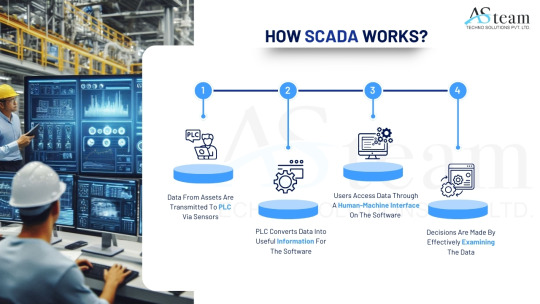
Supervisory Control and Data Acquisition (SCADA) systems are critical in managing and monitoring industrial processes across various industries, including manufacturing, utilities, transportation, and energy.
Field Devices
At the process level, field devices like sensors, meters, and actuators are used to monitor variables like voltage, flow, temperature, and pressure. These gadgets collect information and carry out system-directed operations.
Remote Terminal Units (RTUs) and Programmable Logic Controllers (PLCs)
The SCADA software and the field devices are connected by RTUs and PLCs. After gathering information from the sensors, they transmit it to the control center. Additionally, the SCADA system may send them orders to modify settings or control actuators.
Communication Infrastructure
Strong communication networks are necessary for SCADA to transmit data between the control center and field equipment. This infrastructure can be wireless (such as satellite, radio, and cellular networks) or wired (such as Ethernet and fiber optics).
Centralized Control Station
SCADA software, which analyzes data, creates visualizations, and gives operators tools to monitor and manage operations, is housed in the control station.
Human-Machine Interface (HMI)
The SCADA system's user interface is called the HMI. Operators can engage with the system and make well-informed decisions because to its graphical depictions of processes, warnings, and trends.
#automation#SCADA#PLC#HMI#Automation#Technology#business and industry sectors#business#industrial automation#soft starter#software#software engineering
3 notes
·
View notes
Text
Top 10 Projects for BE Electrical Engineering Students
Embarking on a Bachelor of Engineering (BE) in Electrical Engineering opens up a world of innovation and creativity. One of the best ways to apply theoretical knowledge is through practical projects that not only enhance your skills but also boost your resume. Here are the top 10 projects for BE Electrical Engineering students, designed to challenge you and showcase your talents.
1. Smart Home Automation System
Overview: Develop a system that allows users to control home appliances remotely using a smartphone app or voice commands.
Key Components:
Microcontroller (Arduino or Raspberry Pi)
Wi-Fi or Bluetooth module
Sensors (temperature, motion, light)
Learning Outcome: Understand IoT concepts and the integration of hardware and software.
2. Solar Power Generation System
Overview: Create a solar panel system that converts sunlight into electricity, suitable for powering small devices or homes.
Key Components:
Solar panels
Charge controller
Inverter
Battery storage
Learning Outcome: Gain insights into renewable energy sources and energy conversion.
3. Automated Irrigation System
Overview: Design a system that automates the watering of plants based on soil moisture levels.
Key Components:
Soil moisture sensor
Water pump
Microcontroller
Relay module
Learning Outcome: Learn about sensor integration and automation in agriculture.
4. Electric Vehicle Charging Station
Overview: Build a prototype for an electric vehicle (EV) charging station that monitors and controls charging processes.
Key Components:
Power electronics (rectifier, inverter)
Microcontroller
LCD display
Safety features (fuses, circuit breakers)
Learning Outcome: Explore the fundamentals of electric vehicles and charging technologies.
5. Gesture-Controlled Robot
Overview: Develop a robot that can be controlled using hand gestures via sensors or cameras.
Key Components:
Microcontroller (Arduino)
Motors and wheels
Ultrasonic or infrared sensors
Gesture recognition module
Learning Outcome: Understand robotics, programming, and sensor technologies.
6. Power Factor Correction System
Overview: Create a system that improves the power factor in electrical circuits to enhance efficiency.
Key Components:
Capacitors
Microcontroller
Current and voltage sensors
Relay for switching
Learning Outcome: Learn about power quality and its importance in electrical systems.
7. Wireless Power Transmission
Overview: Experiment with transmitting power wirelessly over short distances.
Key Components:
Resonant inductive coupling setup
Power source
Load (LED, small motor)
Learning Outcome: Explore concepts of electromagnetic fields and energy transfer.
8. Voice-Controlled Home Assistant
Overview: Build a home assistant that can respond to voice commands to control devices or provide information.
Key Components:
Microcontroller (Raspberry Pi preferred)
Voice recognition module
Wi-Fi module
Connected devices (lights, speakers)
Learning Outcome: Gain experience in natural language processing and AI integration.
9. Traffic Light Control System Using Microcontroller
Overview: Design a smart traffic light system that optimizes traffic flow based on real-time data.
Key Components:
Microcontroller (Arduino)
LED lights
Sensors (for vehicle detection)
Timer module
Learning Outcome: Understand traffic management systems and embedded programming.
10. Data Acquisition System
Overview: Develop a system that collects and analyzes data from various sensors (temperature, humidity, etc.).
Key Components:
Microcontroller (Arduino or Raspberry Pi)
Multiple sensors
Data logging software
Display (LCD or web interface)
Learning Outcome: Learn about data collection, processing, and analysis.
Conclusion
Engaging in these projects not only enhances your practical skills but also reinforces your theoretical knowledge. Whether you aim to develop sustainable technologies, innovate in robotics, or contribute to smart cities, these projects can serve as stepping stones in your journey as an electrical engineer. Choose a project that aligns with your interests, and don’t hesitate to seek guidance from your professors and peers. Happy engineering!
5 notes
·
View notes
Text
Container load bank

A container load bank is essentially a large, self-contained unit housed within a shipping container or similar enclosure. The container design makes these load banks portable and durable, allowing them to be easily transported and deployed in various environments. The primary function of a container load bank is to provide a controlled and adjustable electrical load to test power sources under different conditions.
Key Components of a Container Load Bank
Resistive, Inductive, and Capacitive Elements:
Resistive Load: Simulates real-world loads such as lighting and heating systems by converting electrical energy into heat.
Inductive Load: Represents inductive loads like motors and transformers, which require a combination of current and voltage to operate.
Capacitive Load: Simulates capacitive loads such as capacitor banks, which store electrical energy and release it when needed.
Cooling System:
The heat generated by the resistive elements must be dissipated effectively to prevent overheating. Container load banks are equipped with powerful cooling systems, typically using fans or air-cooled heat exchangers, to manage the heat generated during testing.
Control System:
The control system is the brain of the container load bank, allowing operators to adjust the load levels, monitor performance, and record data. Modern load banks often feature remote control capabilities, enabling operators to manage the testing process from a safe distance.
Power Connections:
Container load banks are equipped with robust power connections to interface with the power source being tested. These connections are designed to handle high power levels and ensure safe and efficient operation.
Data Acquisition and Monitoring:
Advanced container load banks come with integrated data acquisition systems that monitor key parameters such as voltage, current, power factor, and frequency. This data is crucial for analyzing the performance of the power source and identifying potential issues.

Container load banks are indispensable tools for testing and maintaining power systems in a variety of industries. Their ability to simulate real-world load conditions, combined with their portability, durability, and safety features, makes them a valuable asset for ensuring the reliability and efficiency of generators, transformers, UPS systems, and other critical power equipment. By understanding how container load banks work and their applications, operators can better prepare for and manage the challenges of power system testing.
Incorporating container load banks into your maintenance and testing routine can significantly enhance the reliability and longevity of your power systems, ultimately leading to greater operational efficiency and cost savings. Whether you're commissioning new equipment or conducting routine maintenance, container load banks provide the tools and insights needed to ensure your power systems are up to the task.

2 notes
·
View notes
Text
From €142 million to €1 billion ($1.1 billion) a year. The European Commission is pressing the accelerator on investment in weapons and defense technologies. From a total €590 million invested between 2017 and 2020, Brussels has moved to a €7.3 billion ($7.9 billion) package for the 2021 to 2027 period. This year alone, the European Defense Fund (EDF) has put €1.1 billion on the plate, divided into 34 calls for as many military-related research topics. From developing new drone models to sensors to increase radar capabilities. From systems to counter hypersonic missile attacks to enhancements in the analysis of images collected by satellites. From “smart weapons” to advanced communication technologies. The bidding process opened in late June, and there is time until November 5 to share a slice of the pie—and then a year to deliver the project.
The project for a common defense has distant origins and was formalized in 2015, but it was Russia's invasion of Ukraine that accelerated the European Commission's march to spend on arms, ammunition, and military technology. One only has to scroll through the list of projects vying for 2024 funding to get an idea of what Brussels is looking for. On the plate is €100 million to develop a new long-range, medium-altitude drone equipped with advanced intelligence, surveillance, target acquisition, and recognition systems (or Istar) and piloted remotely. On a similar project, the European Union has already invested, allocating €98 million of the total €290 million needed to develop a similar aircraft, dubbed Eurodrone, to a consortium consisting of France's Airbus and Dassault Aviation plus Italy's Leonardo. Another €11 million from the EDF goes to the prototype of a small, autonomously guided aerial drone.
Telecommunications and AI
Much of the resources go to strengthening communication and data exchange channels—in order to prevent, for example, someone from taking over the controls of the remotely piloted drone. The EDF allocates €25 million to a 5G network intended for the military sphere, the same amount to prototypes for satellite communications, and €24 million to develop dedicated systems for undersea drones. Information needed to feed algorithms and automatic analysis tools will have to be transferred through these secure channels. One grant awards €45 million for an AI software prototype that would make automated means and operations centers operated by live personnel talk to each other.
According to an article by Anthony King, professor at the University of Exeter, published in the Journal of Global Security Studies, so far in the military, “AI has not been used primarily to produce robotic or autonomous weapon systems. Over the past two decades, the military has sought to leverage big data to generate a richer and deeper understanding of the battlefield by tracking the footprints left in cyberspace by their adversaries. Because there is such a vast amount of digital data in cyberspace, the armed forces have begun to leverage the potential of AI, algorithms, and machine learning to identify patterns and signatures, thereby improving their awareness and so that crucial pieces of information are not missed.”
It's a pattern also pursued by European investments. Already last year, the EDF supported with €4 million a communication model to command swarms of autonomous vehicles, and as much went to strengthening undersea cables, the backbone of the internet and a military target. To make sure the data collected from space “speaks,” and provides a real-time and accurate representation of potential risks, there is a €157 million project, run by Leonardo, Airbus, and ArianeGroup (an aerospace company), to integrate information on a single platform, following in the footsteps of two previous projects. But if we add up all the intelligence programs through sensors, satellites, and other digital sources, the 2023 plan alone has deployed another €70 million on the subject. With another €6 million, the EU also tries to guard against communications blackouts, supporting an Estonian-driven plan for drone navigation technology that works even without satellite signals, relying on real-time analysis of what the machine sees.
New Weapons
The European Defense Fund, however, is also hunting for prototypes of new weapons. There is €25 million for the next generation of armored vehicles, €30 million for the creation of smart and increasingly accurate weapons, and €20 million earmarked for identifying at least four potential solutions for navigating a drone in “non-permissive” environments, which, translated from diplomatic jargon, means areas of war or those characterized by great instability.
Another €50 million concerns the creation of a new ground drone, equipped with “lethal functions.” What kind? This is best explained in an annex to the Commission's green light for EDF 2024. It says the program is to study a “fully autonomous process of targeting against different targets and solutions for mobility and engagement,” but also to produce an analysis of the “ethical and legal aspects of integrating autonomous combat drones into European armed forces.” With a clarification: “If necessary, research should be included to support recommendations and decisions” on these aspects. As in: Give us material to plead the case.
In the case of smart weapons, on the other hand, the EU calls for greater accuracy of missiles and rockets, but also refers to “loitering munitions,” i.e., suicide drones, which circle a defined area until they locate the target and hit it, bringing it down—a controversial military technology. The EU is also interested in copying the Iron Dome model, Israel's missile shield.
Tanks and Corvettes of the Future
Shortly before opening the new calls for proposals, the Commission also announced the 54 winning projects for the 2023 program. These include Marte, or the Main ARmored Tank of Europe, a program to develop new technologies to be integrated on a tank. Sharing the €20 million in funding is a string of some 40 companies, including the two defense champions from Italy and Germany, Leonardo and Rheinmetall, respectively. Just as much has been received by a similar project, again to upgrade the tank's architecture, which France's Thales is leading instead. From Brussels, €154 million will help fund the approximately €288 million needed to develop the new EU patrol corvette (Epc2), with Italy's Fincantieri among the project leaders. Another €25 million is earmarked for the construction of a prototype self-driving boat, 12 meters long, that rides on hydrofoils (i.e., with the hull out of the water).
Leonardo is spearheading a project to develop counter-aircraft systems for military drones, exploiting sensors, disturbances in telecommunications networks, and other technologies. France's Cilas, on the other hand, is spearheading a program to develop Europe's first laser weapon, backed by €25 million. A prototype electro-magnetic-propelled missile launcher has grossed €4 million, €26 million for an artificial intelligence agent called to autonomously manage protection and counterattack in response to cyber aggression, €80 million for a study on defense from hypersonic weapons. Another €27 million will support the creation of a new missile system with a range of 150 kilometers, €40 million is going to a military cargo ship, and €44 million is allocated for offensive technologies on undersea drones.
Funds and Alliances
But the channels for fueling Europe's military industry are varied. Alongside the EDF is Eudis, a scheme worth €2 billion for the seven-year period that supports the acceleration of startups and small and medium-size enterprises (target: 400 per year). There's also the European Investment Fund (EIF), managed by the European Investment Bank (EIB), which helps fund the defense sphere, particularly when it comes to dual (civilian and military) technologies. Its aim is to act as a key investor, consequently attracting other players willing to share the risk, but until 2027 it has €175 million to spend. The European Security Industry Bank can mobilize another €8 billion, also over the next three years.
Seven deals have already been signed. These include €10 million to Germany's Quantum Systems for vertical-takeoff drones, €30 million to Spain's Skydweller for its solar-powered self-driving aircraft, and €600 million on two space communications programs. Italy's Leonardo also benefited from EIB loans, which provided €260 million for research and development activities in various technological fields.
In recent days, the EIF signed an agreement with the NATO Innovation Fund (NIF), the first multinational sovereign venture capital fund backed by 24 of the 32 countries that are part of the Atlantic Alliance. NIF has a billion euros in the till to provide "friendly" funds for innovative companies in frontier technologies such as artificial intelligence, space, robotics, new materials, and biotechnology. The two vaults have decided to team up to increase investment firepower and accelerate the results of business strategies. NATO has started placing its bets: It has funded four startups, in space, materials, semiconductors, and robotics. Among the beneficiaries is Arx Robotics, based in Oberding, Bavaria. The startup makes autonomously guided defense vehicles that can be used to move up to 500 pounds, conduct surveillance, or act as targets. Its devices are already in use by the armies of Germany, Austria, Hungary, and Switzerland and have also been deployed on the Ukrainian front.
In turn, NATO is scouting startups through Diana, its accelerator program. Last year, it funded 44 of them, in the energy, telecommunications, and surveillance sectors, with a check for €100,000 and six months of incubation in its centers scattered across Europe. It recently launched five new calls for proposals. Companies have until August 9 to submit ideas not only in the three fields already covered in 2023, but also in health, logistics, and critical infrastructure. Special attention will be given to ideas that intersect these areas of interest with applications in space, resilience, and sustainability.
A Growing Industry
The defense industry is experiencing particular growth in Europe, driven by the arms race following the invasion of Ukraine. According to the investment bank Goldman Sachs, defense stocks listed on the continent's stock exchanges have increased in value by an average of 45 percent. The Euro Stock Aerospace & Defense Index, an index of the German stock exchange that brings together major military-related stocks (such as Airbus, Rheinmetall, Leonardo, and Bae), has soared 194 percent since February 2022. The European Defense Agency calculates that in 2022, military spending of the EU's 27 countries averaged 1.5 percent of gross domestic product, totaling €240 billion.
And the EDF paves the way for new technologies to be bought. As the policy document states, the fund will have to ensure that by 2027 the EU can have ready prototypes of combat drones, locally developed command and control programs, interoperable radio systems, and integrations between air defenses and the swarm of Earth-observing satellites. Cloud platforms to store and process collected information, new early-warning systems for missile attacks, and new naval and ground combat assets are also in the works. A boundless research program, divided among hundreds of companies (1,200 were involved at multiple levels in the 157 projects funded between 2021 and 2023), which will now have to go through the scrutiny of the nascent Commission, even more bent on opening the purse when it comes to spending on weapons. It is not just a matter of preparing for war. For a European Union obsessed with migration, drones, surveillance systems, and control, technologies can also be an ally in strengthening border closures.
3 notes
·
View notes
Text
Top 7 Challenges Faced By IT Industry In 2023
Within the rapidly growing universe of technology, the IT companies in India assume a crucial role, persistently adjusting themselves to cater to the needs of a perpetually shifting environment. Nevertheless, the advancement of society brings forth a set of obstacles that necessitate a deliberate approach to resolution. As the year 2023 commences, the IT industry faces a multitude of challenges that necessitate careful consideration and effective measures. This blog aims to explore the primary issues encountered by the IT industry in the current year, providing insights into their consequences and possible remedies.

1. Cybersecurity Threats:
The escalation of cyber risks has been observed as a consequence of the widespread adoption of digital technology and interconnected systems. The level of sophistication exhibited by cybercriminals is on the rise, as they deploy advanced strategies to bypass security systems. All the IT companies in Gujarat, India, in the year 2023 are confronted with the formidable challenge of maintaining a competitive edge in the face of cyber attacks, while simultaneously prioritising data protection and securing essential infrastructure. The implementation of effective cybersecurity safeguards, regular conduct of security audits, and provision of cybersecurity education to staff are essential elements in addressing and minimising this risk.
2. Data Privacy and Compliance:
The increasingly stringent legislative framework surrounding data privacy poses a substantial obstacle for the information technology sector. Stringent regulations pertaining to data privacy, such as the General Data Privacy Regulation (GDPR), necessitate rigorous adherence. In the year 2023, the IT companies in Vadodara, Gujarat have the challenge of striking a delicate equilibrium between adhering to regulatory requirements and efficiently using data for commercial objectives. IT organisations are required to allocate resources towards the implementation of compliance frameworks, provide training to their employees, and guarantee that data-handling procedures are in accordance with the prescribed norms.
3. Talent Acquisition and Retention:
The acquisition and retention of talent pose an ongoing problem for the IT industry, as it continues to seek and keep qualified workers. The scarcity of highly specialised skills frequently results in a disparity between demand and supply, hence engendering intense rivalry for those with such talents. Moreover, the current trends in remote work and the increasing globalisation of the talent market serve to exacerbate this challenge. In order to tackle this issue, a reliable IT company in India like Nivida Web Solutions prioritises the enhancement of the skills of their current workforce, provides enticing remuneration packages, cultivates a favourable work environment, and creates avenues for professional advancement and personal improvement.
4. Technological Advancements and Adaptability:
The expeditious rate at which technological developments are occurring has both advantages and disadvantages for the IT business. Although these developments present promising prospects, they also present a difficulty in terms of adaptation. Keeping abreast of developing technology and enabling a smooth transition to new platforms and tools may be a demanding task. In order to effectively adapt to emerging technology, IT organisations must allocate resources towards the implementation of continual training and development programmes, which aim to equip their personnel with the requisite skills.
5. Resource Optimization and Scalability:
The optimisation of resources and the effective scalability of operations have emerged as significant challenges in recent times. The management of resources and the scaling of operations in response to varying market needs and the imperative of cost-effectiveness can provide intricate challenges. Cloud computing and intelligent resource allocation are essential solutions that can be employed to effectively address this dilemma. The utilisation of cloud solutions by Nivida Web Solutions - a recognised IT company in Gujarat, India, allows for enhanced flexibility and cost-efficiency, hence assuring the appropriate allocation of resources.
6. Integration and Interoperability:
The IT environment is distinguished by a diverse array of systems and applications that necessitate harmonious integration. The task of achieving integration and interoperability across diverse platforms, legacy systems, and emerging technologies poses a significant challenge. The establishment of interconnectedness is crucial in facilitating an effective and productive IT ecosystem. It is imperative for the industry to prioritise the development of standardised interfaces, utilise APIs effectively, and implement integration platforms in order to improve interoperability.
7. Environmental Sustainability:
Environmental sustainability has emerged as a pressing issue in various sectors, encompassing the field of IT. The IT industry possesses a substantial carbon footprint as a result of its energy consumption, generation of electronic waste, and operations of data centres. In the year 2023, the sector is faced with the task of identifying environmentally sustainable solutions and adopting practices that effectively mitigate their ecological footprint. The use of green technology, the optimisation of data centre efficiency, and the incorporation of circular economy concepts are positive measures in the pursuit of sustainability objectives.
Final Thoughts:
The IT sector encounters a diverse range of issues in the year 2023, necessitating the implementation of proactive and strategic methodologies. Addressing a range of difficulties, including cybersecurity risks, talent acquisition, technological adaptation, and sustainability, is necessary in order to establish and maintain a flourishing and sustainable information technology ecosystem. By adopting a proactive approach towards innovation, allocating resources towards skill enhancement, and placing emphasis on adherence to regulations and sustainability, Nivida Web Solutions - the most distinguished IT company in Vadodara, may effectively navigate the obstacles it faces and emerge with increased resilience. This will facilitate the ongoing growth and progression of the industry in the era of digitalization.
7 notes
·
View notes